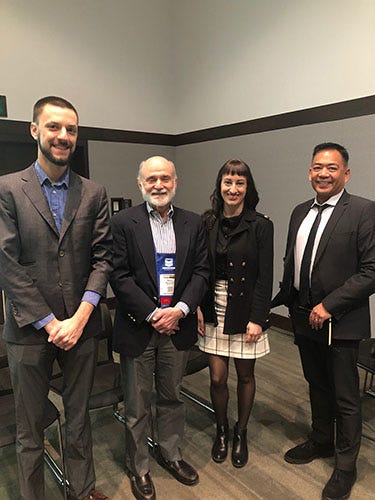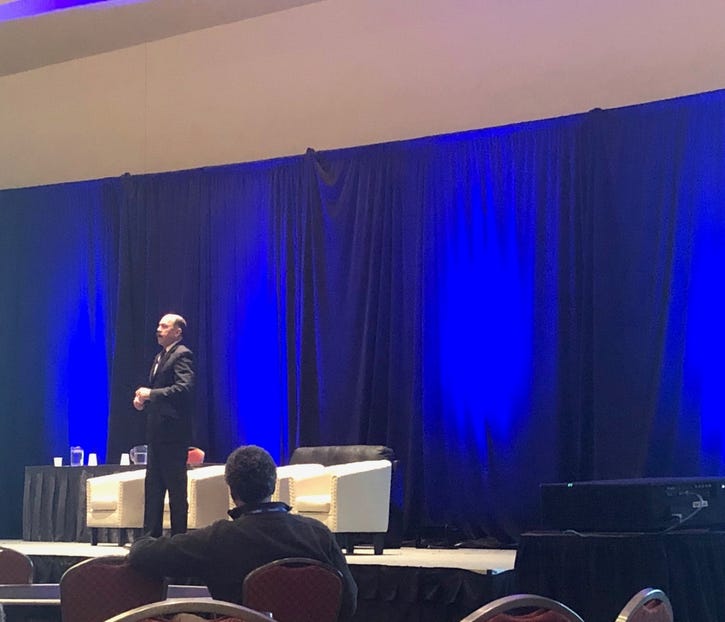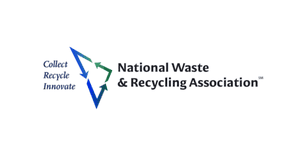More Highlights from SWANApalooza 2019
In addition to show floor networking, the third day of the show featured more keynote and education sessions.

Day three of SWANApalooza, the Solid Waste Association of North America’s (SWANA) technical gathering for professionals to explore environmental solutions for integrated solid waste management held this week in Boston, comprised more keynote and education sessions, as well as show floor networking. Read some highlights from day two here.
The final day of the show, February 28, will include certification exams and site tours of E.L. Harvey & Sons and the Rhode Island Resource Recovery Corporation.
Here’s a look at some of the highlights from day three:
• In session “Tips for Aspiring Writers,” Waste360 Editorial Director Mallory Szczepanski, Waste Dive Senior Editor Cole Rosengren and MSW Management magazine Managing Editor Arturo Santiago joined Barry Shanoff, a Bethesda, Md., attorney, general counsel of SWANA and Waste360 columnist, to discuss writing tips and share what it’s like to write for industry trade publications.
Some of the tips highlighted were use proper grammar; do your research; don’t be afraid to ask questions; tell a story using your voice; utilize your resources; write a first draft and revise, revise, revise; meet your deadlines; and don’t turn down an opportunity because you think it will be “boring.”

• In various sessions, the Environmental Research & Education Foundation shared insights from a number of different reports, covering topics like needlesticks at materials recovery facilities (MRFs), leachate management in the U.S. and landfill post-closure care.
• During session “China Import Policy Impact on Recovered Paper Supply Chain,” Mark Pitts, executive director, paper group, American Forest & Paper Association (AF&PA), addressed the volume gap for recovered fiber that had previously been exported to China and how the industry is adapting to the change. He also shared some insight from a white paper completed by AF&PA and MIT and how the research included in that white paper helped to quantify the grades affected and to predict potential future recovered fiber consumption by U.S. producers.
Pitts explained that while there is rapid Chinese economic growth and paper production, China is short on pulp and needs fiber. He said,“Should China stop all recovered fiber imports from the U.S., domestic manufacturers could potentially consume about 36 million tons, leaving a gap of approximately 9 million tons to be consumed elsewhere.”
He also said that a plunge in value has turned the economics of recovering mixed paper upside down—what was $100 per ton in 2017 has dropped to near $0, some municipalities are paying to have mixed paper hauled away and there’s a risk that mixed paper could be going to landfill in some cases.
According to Pitts, to adapt to the changing market, stakeholders and subject matter experts recommend improving the quality of domestic recovered fiber, improving processing technology, seeking alternative export markets for recovered fiber, encouraging policies that prioritize reuse, recovery, designing for recyclability and using recycled products.
• During keynote session “State of Solid Waste 10 Years into a Business Cycle,” Michael E. Hoffman, managing director and group head of diversified industrials research at Stifel, provided an in-depth overview of what the future looks like for the solid waste business.

Hoffman said garbage is good—operating leverage hasn’t peaked, there is more inflation than just labor, FY19 has no accounting noise to overshadow, companies are using good fundamentals to clean up the portfolio and mergers and acquisitions activity is the most active it’s been in decades. He said in the past 10 years, public companies have only bought at or less than the organic growth. And in the next five years, there could be real share gains from consolidation.
As far as headwinds go, Hoffman points to inflation (labor, freight, fuel and capital equipment costs) and regional disposal costs.
On the recycling side of the business, he shared that importers like Nine Dragons are coming to the U.S. to make pulp/paper from recovered fiber, the recycling business model is changing (MRFs are adding more technology to the mix and the U.S. domestic market is undergoing a structural change), paper prices remain low but are now in a seasonal pattern and the National Sword is about cleaning up air and water, not contamination.
These moves and trends will be discussed in further detail at the Waste360/Stifel Investor Summit held during WasteExpo on May 6 in Las Vegas.
About the Author
You May Also Like




